Nathaniel's latest discoveries
If you should find yourself at a loose end in Shoreditch on a rainy Saturday afternoon, the very best thing you could do is to drop in to M.Goldstein, the quirky antique shop in the Hackney Rd where you can always be assured of engaging conversation and an intriguing display of Nathaniel Lee-Jones‘ latest unexpected discoveries.
With a glance at the cheery illuminated golden “M” from McDonalds in the window, I stepped from the drizzle into the narrow shop where Nathaniel has just installed the fixtures and fittings he salvaged from Bates, the Hatter of Jermyn St, now the company has been sold to Hilditch & Key, the shirtmakers. On one side, Pippa Brooks, Nathaniel’s wife and business partner, nimbly perched upon an old iron bench from Regent’s Park Zoo and engaged in animated chat with a pal, while opposite Nathaniel was happily preoccupied, rearranging his beloved trophies upon the mahogany shelves that he has rescued from one of St James’ most famous shops – thanks to his extensive and mysterious connections in Mayfair, Soho and the West End.
It was a charming scene, and I was a willing audience as Nathaniel started talking, cheeks glowing and eyes sparkling in excitement at his recent acquisitions. Explaining that the staff of Bates, the venerable Hatter, have moved up Jermyn St to Hilditch & Key (taking their hats and their mascot, Binky the stuffed cat, with them), Nathaniel produced a string of treasures they left behind, the shelves, the cabinets, the canopy, the chandeliers, the bags and the signs. Opening up cupboards, he revealed all the press-cuttings and photos, lovingly pasted there, recording the actors, celebrities, military and royalty who have worn Bates’ hats over the years. These are cabinets that held the hats that crowned the famous.
Turning from these items that speak of the elevated clientele of a West End hatter, my eye fell upon a hat with an entirely different history. A nineteenth century Billingsgate market porter’s hat, which Nathaniel also acquired recently. A utilitarian style of headgear that exists beyond the range even of Bates’ extensive collection. With a flat top designed to balance fish crates upon, made of thick leather on a wooden base, and held together by hobnails and bitumen, it is an astounding sculptural object. The deep channel within the brim was designed to catch any water that might spill from a fish crate and Nathaniel explained that if these hats sprang leaks, the skin of a Dover sole was used to seal the holes.
Nathaniel bought the porter’s hat from a photograph, bidding over the phone, from an auction house in the North, and a surprise awaited him when it arrived and he put it on. “It fits me like a glove!”, Nathaniel declared in triumph, snatching the lumpy black hat from its stand and placing it upon his head with an exultant grin to illustrate the point, and, in doing so, producing a painterly image that evoked another century and another world.
I was fascinated to hold the market porter’s hat in my hands and see it close up, nearer to the weight of a helmet that a hat, it was nevertheless expertly balanced. The purposeful yet irregular shapes of leather that enfolded the crown creating curved ridges, lined with heads of gleaming hobnails and daubed with layers of bitumen to create a form and surface that was distinctly fishlike. There was bare wood inside the hat and upon the worn flat top, where the boxes sat. As much as the hat bore evidence of use, it revealed careful maintenance too, because this was an essential piece of kit for a porter, whose livelihood depended on it. No longer manufactured after 1957, Nathaniel wondered if it might be rare, though since the word went round, several porters have rung to claim, “I’ve got one too!”
In a flash of inspiration, Nathaniel has a plan – the Billingsgate porter’s hat is to become the first of a display of different headgear to fill the glass-fronted cabinets from Bates, which are designed to show hats. I could already sense the excitement as he explained his vision and, since he has an incomparable genius for seeking out unlikely and wonderful things, in future I shall keep my eye upon M.Goldstein, awaiting the latest discoveries in Nathaniel’s hat collection.
Nathaniel in his nineteenth century Billingsgate porter’s hat
A Billingsgate porter photographed by Bill Brandt in 1936

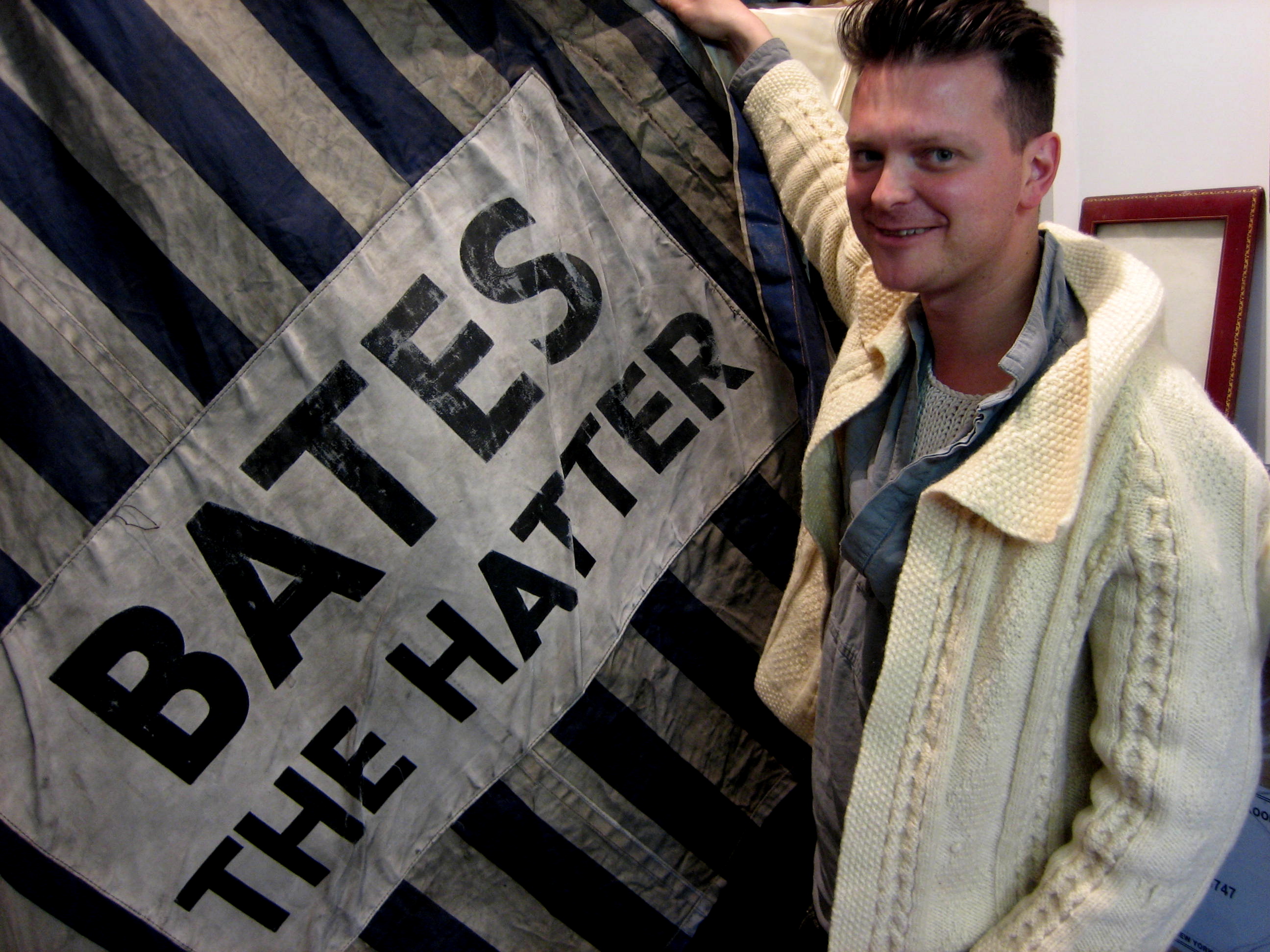
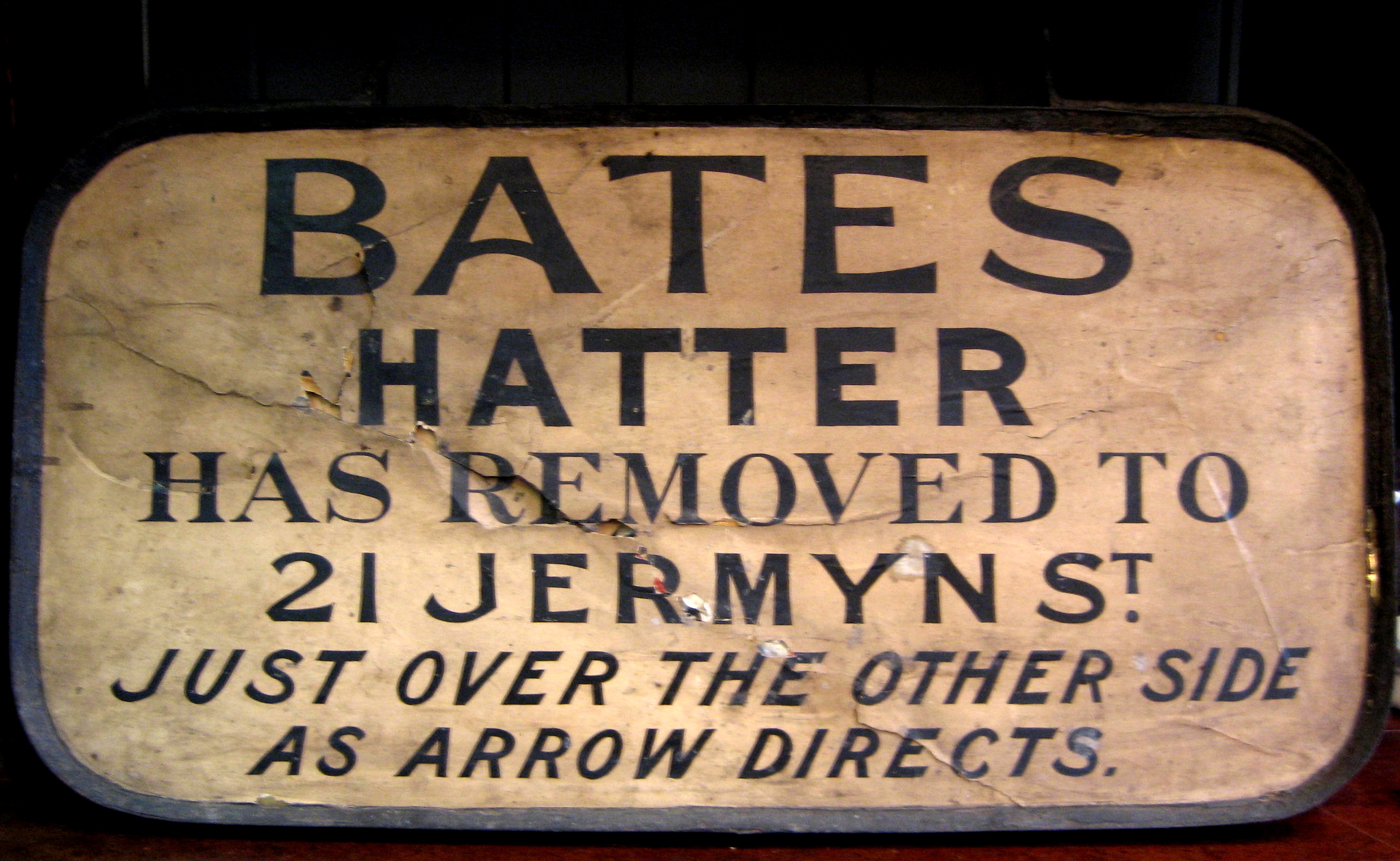
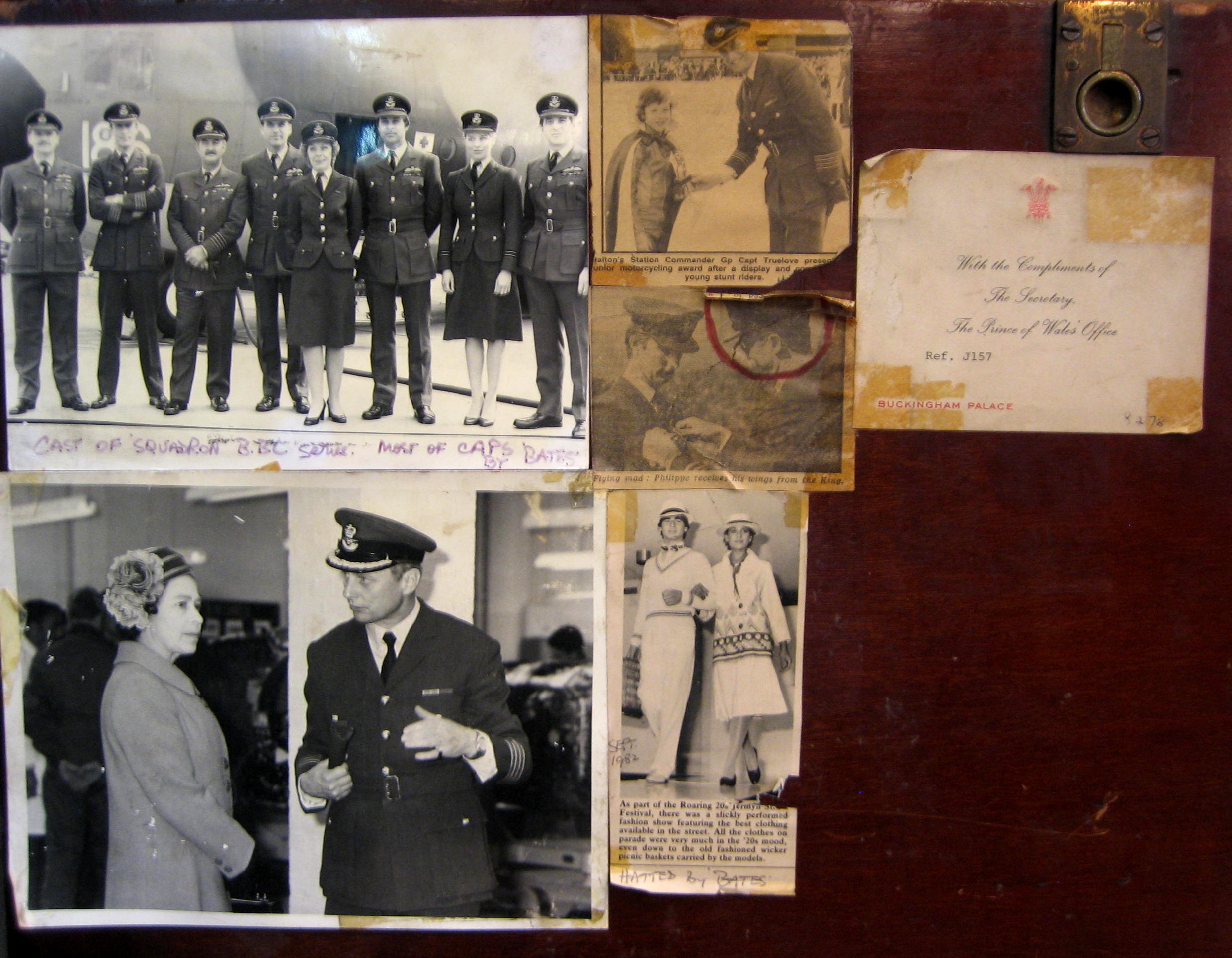
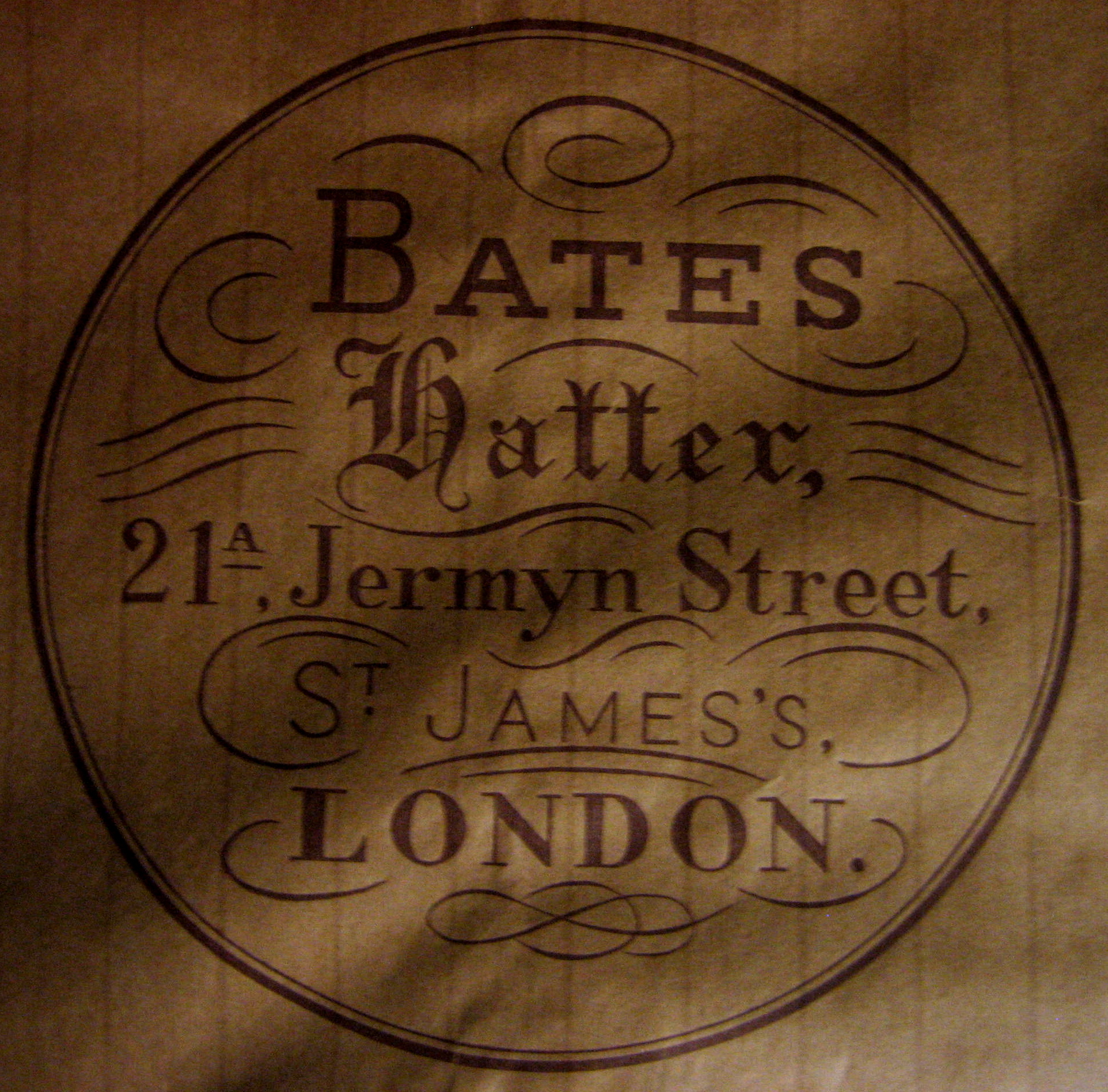
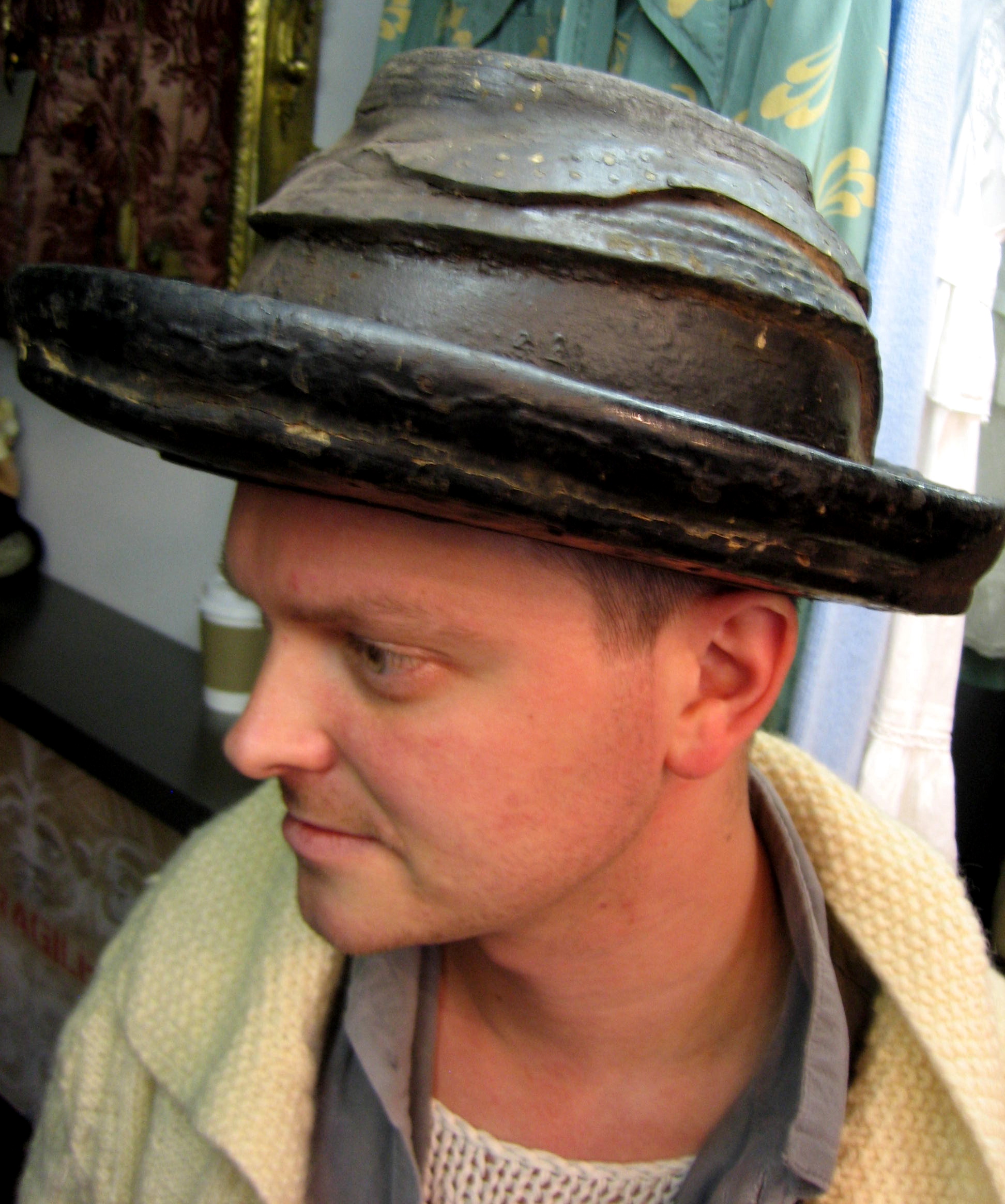
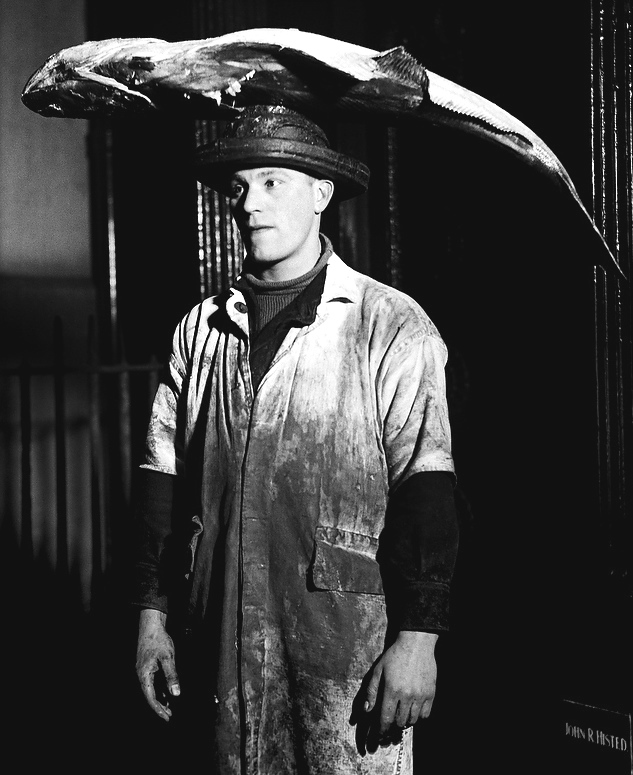














Oh my gosh, Bates — gentlemen hatters! I am glad to hear that they took their mascot, Binks, with them. I photographed Binks and wrote about him in an article I did for the Los Angeles Times a few years ago about famous cats of London. Binks was wearing a miniature top hat and smoking a cheroot. The eccentricity of it was so very P.G. Wodehouse that I smile whenever I tell his story.
Here’s a link to that page for people to read about Binks:
http://travel.latimes.com/articles/la-trw-londoncats13may13-update.
And you can see his photo by clicking the words London Cat tales next to the camera icon under the photo of the Savoy’s black cat.
Hi
I hope you can help.
We are researching the Bates hat brands history and was wondering is you have anything that you are happy to share with us?
Kind regards
Steve